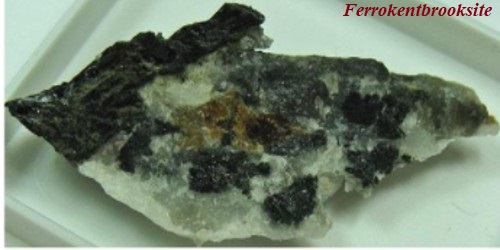Throughout recorded history, mankind has observed the big celestial occurrence known as a “supernova.” The name, which astronomers still use, refers to the assumption that these flashes of light in the “firmament” heralded the birth of a “new star.” We now know that supernovae are what happens at the end of a star’s lifecycle, thanks to the invention of telescopes and modern astronomy. When a star’s hydrogen and helium fuel runs out, it experiences gravitational collapse at its core.
This causes a massive explosion that can be observed billions of light-years away, unleashing enormous quantities of energy and blowing off the star’s outer layers. The largest cosmic explosion has been verified thanks to a global team of astronomers led by the University of Southampton! The stellar explosion AT2021lwx was more than ten times brighter than any supernova ever seen and 100 times brighter than all of the stars in the Milky Way put together. It occurred roughly 8 billion light-years away in the constellation Vulpecula.
The research team included astronomers from the University of Southampton’s School of Physics and Astronomy, the CAS Key Laboratory of Optical Astronomy, the CSIS Institute of Space Sciences, the DTU National Space Institute, the European Southern Observatory (ESO), the Instituto de Astrofsica de Canarias (IAC), the Institut d’Astrophysique de Paris (IAP), the Italian National Institute for Astrophysics (INAF), the Institute of Space Studies of Catalonia Their research was published in the Monthly Notices of the Royal Astronomical Society.

AT2021lwx was discovered at the Zwicky Transient Facility (ZTF) in California in 2020. It was later identified by Hawaii’s Asteroid Terrestrial-impact Last Alert System (ATLAS) and is still being monitored by a global network of observatories. Because most past supernovae have only been visible to scientists for a few months, AT2021lwx is a record-breaking supernova. It outshines previous supernovae by a factor of ten and is three times brighter than any tidal disruption event – when a star is devoured by a supermassive black hole (SMBH).
GRB221009A, an extraordinarily bright and long-lasting gamma-ray burst observed last year that occurred 2.4 billion light-years from Earth in the constellation Sagitta, now holds the record for the brightest explosion. Even though GRB221009A was brighter than AT2021lwx, it only existed for 10 hours, hence the latter’s overall energy output was much greater. Despite having been detected for three years, the supernova’s explosion’s size remained unknown until recently. Dr. Philip Wiseman, the principal investigator and a Research Fellow at the University of Southampton, stated:
“We discovered this by chance, as it was flagged by our search algorithm while we were looking for a specific type of supernova.” Most supernovae and tidal disruption events last only a few months before dissipating. It was immediately remarkable for something to be dazzling for more than two years.”
The researchers used data from the ZTF and ATLAS observatories, as well as the Wide-field Infrared Survey Explorer (WISE), to conduct their investigation. Additional observations were performed using the Neil Gehrels Swift satellite telescope, the European Southern Observatory’s New Technology Telescope (NTT) in Chile, and the Gran Telescopio Canarias (GTC) in Spain. This yielded information in the optical, X-ray, ultraviolet (UV), and near- and mid-infrared (NIR and MIR) wavelength ranges. The GTC proposal’s Principal Investigator was Tomás E. Müller Bravo, an ICE-CSIC and IEEC postdoctoral researcher. As she stated:
“Because of the uniqueness of this event, we observed it at various wavelengths in order to better understand its nature.” Our successful submission to Gran Telescopio Canarias (GTC) in particular enabled us to observe the presence and absence of certain spectral lines and compare them to those from other known transients in order to better understand the physical mechanisms underlying this bright source.”
“It’s really shocking when you find a transient, check its brightness, and realize it’s an order of magnitude brighter than any other supernova,” said co-author Lluis Galbany, an ICE-CSIC researcher and IEEC member. “When our collaborators informed us of the existence of this transient, we quickly prepared a quick-turnaround proposal to observe it with the Gran Telescopio Canarias (GTC).”
There are numerous possibilities as to what caused it, but the team believes that an SMBH forcefully disrupted an incredibly massive cloud of gas or dust. When a piece of the cloud was consumed, shockwaves were sent through the remaining remains and the accretion disk encircling the black hole.
“When you find a transient with properties different from those you are used to monitoring, your first reaction is to try to explain what events can produce them and how. Consequently, multiple alternatives appear, but only very few can describe your observations. This is what happened with this event.”
The researchers will then collect additional data on the explosion and run updated computer simulations to test their theories about what caused it. Additional multi-wavelength data is hoped to disclose specifics about the object’s surface and temperature, as well as provide insight into what interior processes are at work. Claudia Gutiérrez, co-author and postdoctoral researcher at the ICE-CSIC, stated:
“When you discover a transient with properties that differ from those you’re used to monitoring, your first instinct is to try to explain what events can cause them and how.” As a result, numerous choices emerge, but only a handful can adequately reflect your observations. This is exactly what occurred with this event.”
The team also wants to take advantage of next-generation facilities, such as the Vera C. Rubin Observatory, which will be operational in the next years. Once operational, the observatory will perform the Legacy Survey of Space and Time (LSST), a ten-year program that will cover the entire southern sky and provide the most detailed images of the Universe ever seen. Among the numerous things the LSST will disclose, scientists hope to identify additional exceedingly unusual events like AT2021lwx. Given their high energy, large supernovae could be a process that helps shape galaxies over time.
















